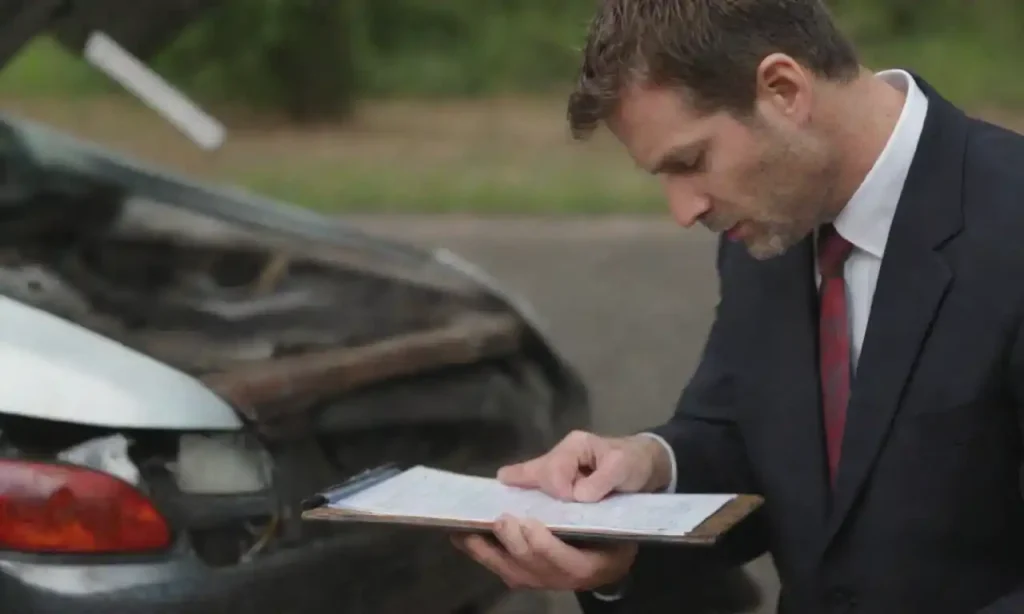How Insurance Adjusters Evaluate Damages: A Comprehensive Guide

Understanding the complexities of how insurance adjusters evaluate damages is crucial in navigating the often daunting world of insurance claims. When accidents occur, whether they involve a vehicle, home, or workplace incident, the role of an adjuster becomes paramount in determining the financial restitution owed to those affected. Their evaluation can influence the outcome of a claim significantly, shedding light on the standards and procedures that govern the insurance claims process. By grasping these methods, claimants can be better prepared to engage with their insurers and advocate for their best interests.
This article delves into the intricate methodologies employed by insurance adjusters when assessing damages and determining claim payouts. We will explore the various types of damage evaluations, the factors influencing these assessments, and the overall impact of these evaluations on claims approval. Furthermore, we will provide insights into how individuals can better communicate with adjusters during the claims process, ensuring that they are equipped with the knowledge needed to achieve favorable outcomes. By the end of this comprehensive guide, readers will have a clearer understanding of the elements that shape the insurance claims landscape.
Understanding the Role of Insurance Adjusters

The primary responsibility of an insurance adjuster is to investigate and analyze the details surrounding an insurance claim. They act as intermediaries between the insurer and the policyholder, ensuring that the terms of the policy are adhered to while fairly evaluating the damages incurred. Adjusters are equipped with both technical knowledge and soft skills, allowing them to effectively communicate with claimants, gather necessary information, and establish a fair valuation based on the evidence presented.
Adjusters come in various forms including staff adjusters, independent adjusters, and public adjusters. Staff adjusters work directly for an insurance company, while independent adjusters are third-party contractors hired by insurers on occasion or during heavy claim periods. On the other hand, public adjusters represent the policyholder's side, assisting them in filing claims and ensuring they receive a fair settlement from the insurance company. Understanding these roles aids in appreciating the dynamics that play out during the claims process.
The Process of Damage Evaluation
The process of damage evaluation begins as soon as a claim is submitted. Initially, adjusters will conduct interviews with the claimant to gather details surrounding the incident. This is followed by a comprehensive review of documentation, including police reports, medical records, repair estimates, and any other pertinent information that will substantiate the claim. During this phase, adjusters often pay close attention to the circumstances surrounding the incident, including any potential factors of negligence or liability that may complicate the issue.
After the initial fact-finding mission, the adjuster will often visit the site where the damages occurred. This onsite inspection allows them to visually assess the extent of the damage which is critical in determining final payouts. For property damages, this inspection might involve photographing the scene, measuring structural impacts, and comparing existing conditions with pre-incident states. For vehicular accidents, the adjuster might analyze the damage to the vehicles and any other property affected, often consulting with industry-standard repair guides to establish the cost of repairing or replacing damaged items.
Factors Influencing Damage Evaluation
Several factors come into play when an adjuster evaluates damages. One of the most critical aspects is the nature and extent of the damages incurred. For example, damages can vary significantly from minor scratches on a vehicle to complete structural failure in a home. Understanding the severity of each case helps adjusters assess the claim accurately.
Another influencing factor is the insurance policy itself. Insurance policies contain specific language that dictates what is covered and to what extent. Adjusters must decipher these nuances to ensure that only valid claims are honored based on the policy stipulations. This process may include interpreting exclusions and endorsements that can significantly influence the payout amount.
Additionally, location plays a pivotal role in the evaluation process. Certain regions may have localized regulations or market conditions (such as repair costs or local labor rates) that can impact the adjuster's assessment. Economic fluctuations, including changes in pricing trends, material availability, and labor costs, can also affect the valuation of damages. Adjusters must be equipped with knowledge of local conditions to make informed decisions regarding claims.
Communicating with Insurance Adjusters
An essential component of navigating the claims process is understanding how to effectively communicate with insurance adjusters. Claimants should be prepared to provide comprehensive and factual information while preserving a professional demeanor. First impressions matter; being organized and systematic in presenting your case can facilitate a smoother evaluation process. Claimants should ensure that all relevant documents are readily available and presentable.
Clearly stating the facts surrounding the claim, including timelines, witness perspectives, and relevant circumstances, can assist the adjuster in forming a complete view of the incident. Avoid overly emotional responses; while it's vital to communicate the personal impact of the event, presenting logical arguments supported by evidence is far more compelling. Being concise but informative while articulating your points can bolster the likelihood of a fair assessment.
What Happens After the Evaluation?
Once the damage evaluation is completed, the adjuster will compile their findings into a report that is submitted to the insurance company. This report includes the detailed assessment of damage, valuation estimates, and any recommendations for approval or denial of the claim. The insurance company uses this report to make a final decision regarding the claim and will communicate the outcome to the policyholder.
If approved, the claim payout process will initiate, which often involves further communication about the settlement amount and any additional documentation required to release funds. Conversely, if a claim is denied, the claimant must understand why it was rejected. In such cases, the policyholder has the option to ask for a reconsideration, discuss the decision with the adjuster, or seek the guidance of a public adjuster or legal representation to appeal the decision.
Conclusion: Navigating the Claims Landscape
In conclusion, understanding how insurance adjusters evaluate damages is vital for anyone who may face the complexities of the insurance claims process. Adjusters serve as crucial mediators striving to balance the needs of the insurer with those of the policyholder. Through a meticulous assessment of damages, consideration of policy stipulations, and effective communication, claimants can improve their chances of receiving fair compensation. By being informed and prepared, individuals can navigate the claims landscape with confidence and clarity. Ultimately, a comprehensive grasp of the roles and processes involved allows policyholders to advocate for themselves effectively, ensuring a more favorable resolution to their claims.

Leave a Reply